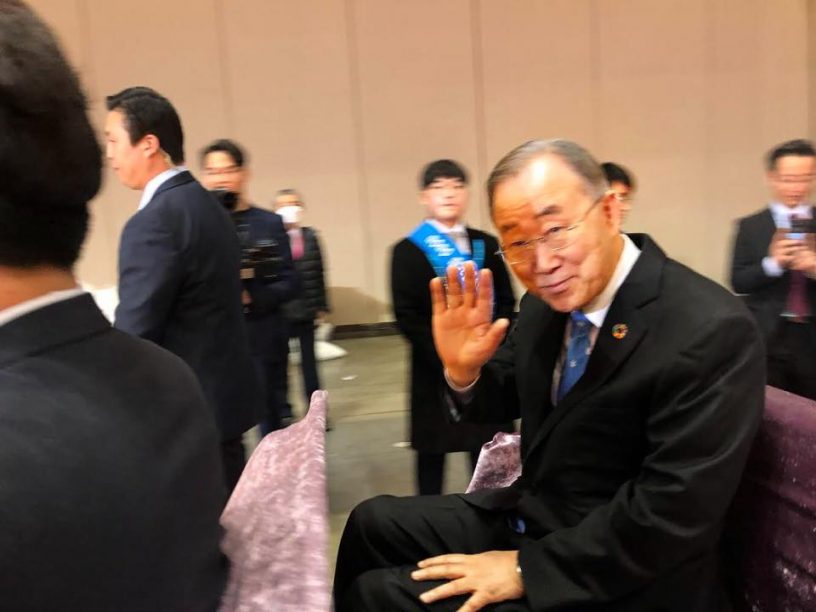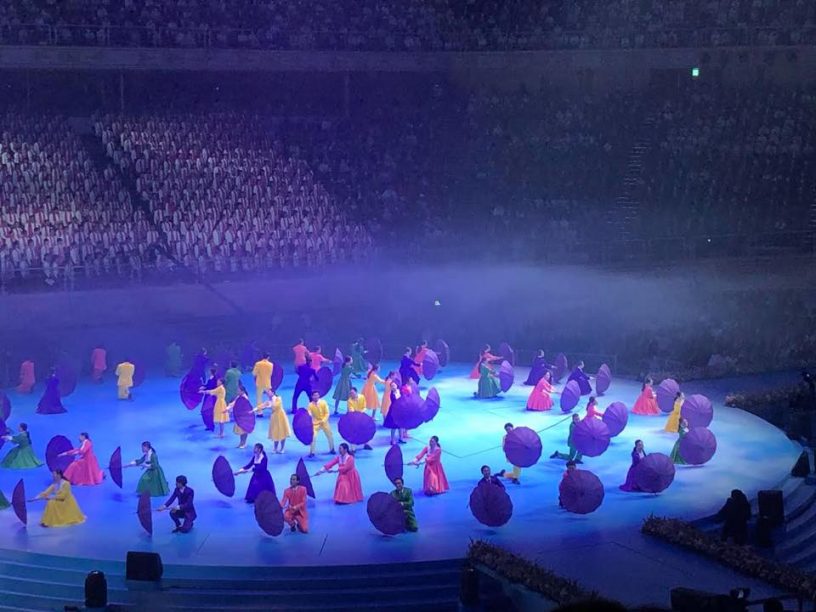SEOUL, South Korea- Delegates consisting of students and leaders from various nations, beliefs and sectors, including the academe, media, and business, attended the 2020 World Peace Summit on February 2 to February 8, 2020 amidst the global threat of the coronavirus.
With its theme Unification of the Korean Peninsula and the Realization of Peace in the World through Interdependence, Mutual Prosperity, and Universal Values, this gathering of peacebuilders coincides with the centenary of the founder of the Universal Peace Federation, Rev. Sun Myung Moon.
Media Summit
Its mission to promote lasting peace through dialogue is manifested in the various parallel conferences during the summit. The Media Summit featured the various innovations around the globe, highlighting Artificial Intelligence and machine learning, as well as challenges that the industry faces, such as disinformation and fake news. The conference highlight is the formation of the International Media Association for Peace.
Addressing Climate Change
Nobel Laureate Mario J. Molina, the scientist who identified the ozone layer and helped solve its depletion, discussed climate change and encouraged cooperation to help solve it.
“We have to respect the welfare of future generations, even our own welfare because we are already having this very large problem. It will be tremendously irresponsible not to do something about climate change,” said Molina. “We are now calling it a climate emergency.”
4th Sunhak Peace Prize Award Ceremony
Ban Ki-moon, former United Nations Secretary General received the Founders’ Award- 2020 Sunhak Peace Prize for his tireless efforts in bridging lasting peace, and focusing on finding solutions for climate change by pushing for the 2015 Paris Agreement. This aims to reduce the rise of global temperature, and promoting the Sustainable Development Goals, which the global community uses as guide in living in this modern world.

Former United Nations Secretary General Ban Ki- Moon greeting the guests at the 4th Sunhak Peace Prize Ceremony at the Korean International Exhibit Center on February 5, 2020
Senegalese President Macky Sall received the Sunhak Peace Prize for his transparent leadership in policy making and reducing his own presidential term in Africa. Meanwhile, Bishop Dr. Munib Younan also received the Sunhak Prize for leading the peaceful resolution of the Israel-Palestine conflict.
After the conference, a musical tribute to its founder, Rev. Sun Myung Moon and his wife, Dr. Hak Ja Han Moon, as well as a mass wedding for thousands of couples, were held at the Cheongshim Peace World Center in Gapyeoung.

Music Presentation at the Cheongshim Peace World Center on February 6, 2020
11 February 2020
Words and Photos by
Donna May Lina, Executive Producer- Panahon TV | President Ube Media

Hallyu, a Chinese word that literally translates to “Korean Wave”, is used to describe the growing awareness and appreciation of South Korean culture across the globe. From music and television dramas, to cuisine and cosmetics, Korean influences are everywhere—even in our country where one can definitely feel hallyu.
For most fans of Korean culture, the ultimate way to experience it is in its motherland. But if the price of a plane ticket to your dream country is too steep for your taste, try going to Bulacan to get a piece of Korea.
In Bocaue, Bulacan, the Shrine of Saint Andrew Kim Taegon is making waves in social media.
This Catholic church’s original structure was built in 1959, and on its 50th year in 2009, was renovated under the leadership of Father Avel Sampana, former parish priest of the church. The architecture is breathtaking, with touches of gold and white that add to its serenity. Every part of the shrine has a significant meaning to the life of St. Andrew.
Outside, plants abound, a refreshing break from the urban concrete. This shrine has many sections, such as the room for St. Andrew’s Relic, which houses a small piece of bone from the saint, which is said to be miraculous.
You’ll also find a gazebo facing the Sta. Maria River, its bamboo-covered, meandering pathways symbolizing the journey of St. Andrew from South Korea to the Philippines. A pagoda representing the seven sacraments is a peaceful spot for reflection. Mango trees abound in the area because St. Andrew loved writing beneath their shade.
During your stroll, you will also chance upon the statue of Saint Andrew Kim. Considered the first Korean Catholic priest, Saint Andrew actually lived in Bulacan to study Catholicism back in the 18th century. Back then, Catholics in Korea were persecuted by the ruling Joseon Dynasty for abandoning Confucianism. After serving as a seminarian in Bocaue, he became a priest. He went back to his own country to spread the word of God, but was caught and sentenced to death. On May 6, 1984, Pope John Paul II led his canonization.
To reach the shrine, ride the German Espiritu bus located in SM North or the RJ Bus in Monumento bound for Balagtas, Bulacan. After getting down at 7-11 Bocaue, ride a jeepney bound for Marilao. Ask the driver to drop you off at Mc Donald’s Lolomboy. From there, take a 300-meter walk.


Things to remember when visiting:
*Remember that this tourist destination is primarily a church. The Korean nuns and devotees would appreciate your silence and compliance to rules.
*You may want to wear you best OOTDs for your Instagram posts, but make sure your clothes are decent. No sleeveless, no shorts or short skirts. Wear proper footwear.
*Just like in other places, clean as you go.
The shrine is open from 10:00 am to 12:00 noon and 2:00 pm to 4:00 pm. Masses are held from 6:30 am every 1st Saturday of the month.
Panahon TV Intern Charlene Bianes
In a ceremony held at the Weather and Flood Forecasting Center of the Philippine Atmospheric, Geophysical, and Astronomical Services Administration (PAGASA) in Quezon City last Wednesday, DOST-PAGASA inaugurated the Communication, Ocean and Meteorological Satellite (COMS) Data Analysis System in partnership with the Korea International Cooperation Agency (KOICA).
The system will receive and analyze data from COMS, the first geostationary multi-purpose satellite of Korea, which was launched in space in 2010. Stationed 36,000 kilometers above the Earth’s equator, the satellite performs meteorological mission, ocean observations, and communications services. It can generate sixteen types of analysis data for weather forecasting and numerical prediction.
The COMS Satellite Receiving System is installed at the PAGASA Center in Quezon City and its four regional offices in Tuguegarao, Legazpi, Lapu-Lapu and El Salvador City.
In his message during the ceremony, PAGASA Administrator Dr. Vicente Malano expressed his appreciation to KOICA for its assistance in the project that will benefit Filipinos. “This multi-million project, made possible through the Korean government’s grant aid and technical cooperation program, is guaranteed to help strengthen PAGASA’s capacity to receive and analyze meteorological satellite data and thereby enhancing weather monitoring and improving weather forecast accuracy.”
photos from DOST-PAGASA Facebook
Meanwhile, KOICA Philippine Coordinator Myun Seop Shing conveyed his hopes for the project’s success. “The Philippines has long been vulnerable to extreme weather conditions and is one of the countries greatly affected by climate change… It is my sincere hope that this project will be a best practice among all our partnership projects which play an important role in achieving the Philippine Development Plan and also will strengthen the friendship and cooperative relations of the two countries.”



